Compound 代币和价格预言
Compound 中 COMP 代币挖矿 和 价格预言机的实现
Compound 白皮书和核心代码,大佬已经写了很详细的文档,见 [Compound 从白皮书看业务逻辑](https://learnblockchain.cn/article/2781) [Compound 合约部署](https://learnblockchain.cn/article/2915) [合约升级模式-以 compound 为例](https://learnblockchain.cn/article/2802) 这里补充下周边: COMP 代币 和 价格预言 ## COMP ### 投放计划 为了激励用户,用户每次存款或者借款,Compound 都会奖励 COMP 代币,可以用于治理投票 COMP 每日总产出约为 2312 枚,各市场的分布见 [文档](https://compound.finance/governance/com),部分市场如下 | Market | Per Day | | :- | -: | | DAI | 880.38 | | Ether | 141.25 | | USDC | 880.38 | | USDT | 126.80 | 每个市场,借款和存款产出的 COMP,分别占 50% 以 USDC 市场为例,每日共产出 880.38 枚 COMP,其中通过借款的方式投放 440.19 枚 COMP,借款用户按其借款额度占总借款额度的比例分配;存款同理 ### 配置 如上所述,根据各市场每日产出的 COMP 数量,按每 15 秒一个区块的假设,可以得到每个区块产出的 COMP 数量,记录在 `ComptrollerV6Storage` 中 ```js contract ComptrollerV6Storage is ComptrollerV5Storage { // https://compound.finance/governance/comp /// @notice The rate at which comp is distributed to the corresponding borrow market (per block) mapping(address => uint) public compBorrowSpeeds; /// @notice The rate at which comp is distributed to the corresponding supply market (per block) mapping(address => uint) public compSupplySpeeds; } ``` `compBorrowSpeeds` 和 `comSupplySpeeds` 为 `cToken` 到每区块产出 COMP 数量的映射 比如对 `cUSDC` 来说,它在两个映射表中的值都为 67000000000000000 (COMP 的精度为 ${10}^{18}$) $$ \frac{2 \times 67000000000000000 \times 86400}{15} \approx 880.38 \times {10}^{18} $$ ### 存款挖矿 用户每次操作,只要可能更新存款,如存款操作,会触发 `mintAllowed()`,它进一步 - 调用 `updateCompSupplyIndex()` 更新当前市场的 COMP 存款指数 - 调用 `distributeSupplierComp()` 分发当前用户此前未结算的存款产出的 COMP ```js function mintAllowed(address cToken, address minter, uint mintAmount) external returns (uint) { // Keep the flywheel moving updateCompSupplyIndex(cToken); distributeSupplierComp(cToken, minter); return uint(Error.NO_ERROR); } ``` -- 当前市场的 COMP 存款指数更新逻辑如下 ```js /** * @notice Accrue COMP to the market by updating the supply index * @param cToken The market whose supply index to update * @dev Index is a cumulative sum of the COMP per cToken accrued. */ function updateCompSupplyIndex(address cToken) internal { CompMarketState storage supplyState = compSupplyState[cToken]; uint supplySpeed = compSupplySpeeds[cToken]; uint32 blockNumber = safe32(getBlockNumber(), "block number exceeds 32 bits"); uint deltaBlocks = sub_(uint(blockNumber), uint(supplyState.block)); if (deltaBlocks > 0 && supplySpeed > 0) { uint supplyTokens = CToken(cToken).totalSupply(); uint compAccrued = mul_(deltaBlocks, supplySpeed); Double memory ratio = supplyTokens > 0 ? fraction(compAccrued, supplyTokens) : Double({mantissa: 0}); supplyState.index = safe224(add_(Double({mantissa: supplyState.index}), ratio).mantissa, "new index exceeds 224 bits"); supplyState.block = blockNumber; } else if (deltaBlocks > 0) { supplyState.block = blockNumber; } } ``` 首先判断距离上次更新指数,经过了几个区块 `deltaBlocks`,另外根据 `supplySpeed` 判断当前市场是否产出 COMP (0x, Aave 等配置为 0,表示不产出) 条件都满足后,计算 COMP 产出数量,除以 `cToken` 总供给,得到这几个区块间,平均每个 `cToken` 对应的 COMP 产出,即代码中的 `ratio` 也就是说,`ratio` 可以理解为每持有一个 `cToken` ,可以得到多少 COMP 最后将 `ratio` 累加进 COMP 存款指数 -- 当前用户此前未结算的 COMP 分发逻辑如下 ```js /** * @notice Calculate COMP accrued by a supplier and possibly transfer it to them * @param cToken The market in which the supplier is interacting * @param supplier The address of the supplier to distribute COMP to */ function distributeSupplierComp(address cToken, address supplier) internal { // TODO: Don't distribute supplier COMP if the user is not in the supplier market. // This check should be as gas efficient as possible as distributeSupplierComp is called in many places. // - We really don't want to call an external contract as that's quite expensive. CompMarketState storage supplyState = compSupplyState[cToken]; uint supplyIndex = supplyState.index; uint supplierIndex = compSupplierIndex[cToken][supplier]; // Update supplier's index to the current index since we are distributing accrued COMP compSupplierIndex[cToken][supplier] = supplyIndex; if (supplierIndex == 0 && supplyIndex >= compInitialIndex) { // Covers the case where users supplied tokens before the market's supply state index was set. // Rewards the user with COMP accrued from the start of when supplier rewards were first // set for the market. supplierIndex = compInitialIndex; } // Calculate change in the cumulative sum of the COMP per cToken accrued Double memory deltaIndex = Double({mantissa: sub_(supplyIndex, supplierIndex)}); uint supplierTokens = CToken(cToken).balanceOf(supplier); // Calculate COMP accrued: cTokenAmount * accruedPerCToken uint supplierDelta = mul_(supplierTokens, deltaIndex); uint supplierAccrued = add_(compAccrued[supplier], supplierDelta); compAccrued[supplier] = supplierAccrued; emit DistributedSupplierComp(CToken(cToken), supplier, supplierDelta, supplyIndex); } ``` 首先获取市场最新的 COMP 存款指数,以及用户此前结算时的指数,相减得到 `deltaIndex` 然后乘以用户持有的 `cToken` 数量,得到用户这段时间应该获得的 COMP -- 需要说明的是,这里结算的是用户之前的存款,占当前总供给的百分比,不会算入用户接下来马上将改变的存款 换句话说,存款余额的修改,要在至少一个区块之后才会被用于结算 COMP,即用户操作与 COMP 结算是跨区块的 算是降低了被闪电贷攻击的风险 ### 借款挖矿 与存款挖矿大同小异,稍微复杂一些,这里不再赘述 ### 通胀 根据 messari,COMP 的 Inflation Rate 为 [27.50%](https://messari.io/asset/compound/metrics/supply) 我没找到其确切公式,不过我们可以自行计算,根据 2021-11-05 和 2022-11-04 的 [流动性投放计划](https://messari.io/asset/compound/profile/supply-schedule) ,简单相除得到通胀系数为 27.34%;和 messari 数据相比,算是大差不差了 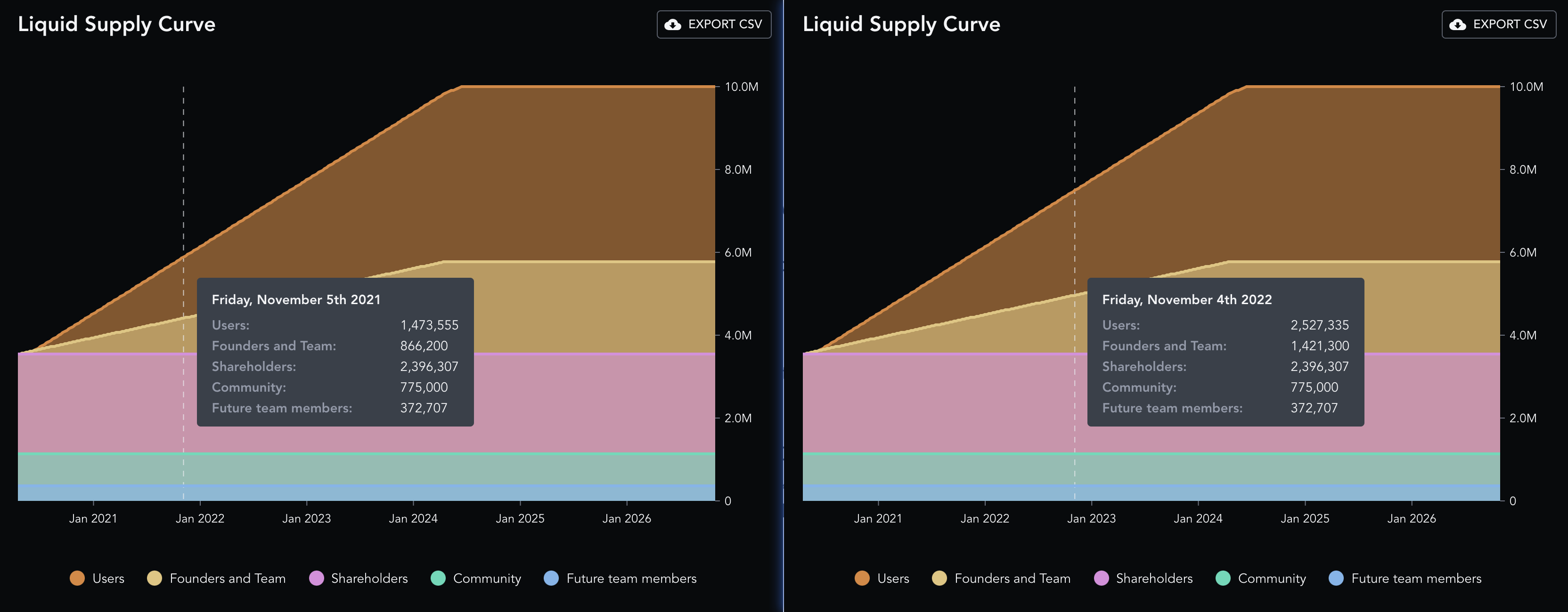 | -| 2021-11-05 | 2022-11-04 | Inflation Rate | | :-: | -: | -: | -: | | User | 1,473,555 | 2,527,335 | | | Founder and Team | 866,200 | 1,421,300 | | | Shareholders | 2,396,307 | 2,396,307 | | | Community | 775,000 | 775,000 | | | Future team members | 372,797 | 372,797 | | | $\sum$ | 5,883,859 | 7,492,379 | +27.34% | 但是,这里有个统计陷阱:Founders & team 分批 vest 且 Future team members 也未兑现,部分流动性没有进入市场,因此分母偏大了 也就是说,实际通胀率还要高出不少 不管怎样,通胀率接近甚至超过 30% 的资产,价格稳定在 $100 ~ $300;我看不懂,但我大受震撼~ ### 安全 9月29日 Compound 发生一起安全事件,详见 [[事件分析] 9月29日 Compound 62号提案 所引发的可怕Bug](https://github.com/rebase-network/Dapp-Learning/blob/main/defi/Compound/contract/%5B%E4%BA%8B%E4%BB%B6%E5%88%86%E6%9E%90%5D%209%E6%9C%8829%E6%97%A5%20Compound%2062%E5%8F%B7%E6%8F%90%E6%A1%88%20%E6%89%80%E5%BC%95%E5%8F%91%E7%9A%84%E5%8F%AF%E6%80%95Bug.md) 其中,Robert Leshner 提到的 `Reservori` 合约 ([地址](https://etherscan.io/address/0x2775b1c75658Be0F640272CCb8c72ac986009e38)),就是上面投放计划中 `User` (借贷挖矿) 的 COMP 来源 ## 价格预言机 Compound 同时使用 Uniswap v2 和 Chainlink v2 作为价格预言机 Chainlink 价格以 Uniswap 价格为锚,前者作为实际价格,后者作为基准价格 Chainlink 价格需要在 Uniswap 价格的某段浮动范围内,才能作为有效价格被更新到预言机 ### 代码 [compound-finance/open-oracle](https://github.com/compound-finance/open-oracle) 中只有 Uniswap 相关代码,我找遍 branches 和 tags 都没找到 Chainlink 部分 最后在 Compound 社区找到这个关于添加 Chainlink 预言机提案的精彩讨论 [Oracle Infrastructure: Chainlink Proposal](https://www.comp.xyz/t/oracle-infrastructure-chainlink-proposal/1272) 成果是 Chainlink 团队在 Compound 原有 Open Price Feed 的代码基础上,集成了 Chainlink 聚合器的报价,并进一步做了部署和测试;Compound 社区通过治理,应用了新的预言机 然而,Chainlink 提交的 PR:[Oracle Improvement (Chainlink Price Feeds) #150](https://github.com/compound-finance/open-oracle/pull/150),改动较多,还卡在审核阶段,未被合并.. 因此,最新代码不在官方仓库中 审计报告见 [Trail of Bits: Chainlink Open-Oracle Summary Report](https://drive.google.com/file/d/1TsOXhBLenStjdd2mxF1Sfmmh_Na9X527/view) 以下分析基于 Chainklink fork 的仓库 [smartcontractkit/open-source](https://github.com/smartcontractkit/open-oracle/blob/master/contracts/Uniswap/UniswapAnchoredView.sol) ### 实现 ```js /** * @notice This is called by the reporter whenever a new price is posted on-chain * @dev called by AccessControlledOffchainAggregator * @param currentAnswer the price * @return valid bool */ function validate(uint256/* previousRoundId */, int256 /* previousAnswer */, uint256 /* currentRoundId */, int256 currentAnswer) external override returns (bool valid) { // NOTE: We don't do any access control on msg.sender here. The access control is done in getTokenConfigByReporter, // which will REVERT if an unauthorized address is passed. TokenConfig memory config = getTokenConfigByReporter(msg.sender); uint256 reportedPrice = convertReportedPrice(config, currentAnswer); uint256 anchorPrice = calculateAnchorPriceFromEthPrice(config); PriceData memory priceData = prices[config.symbolHash]; if (priceData.failoverActive) { require(anchorPrice < 2**248, "Anchor price too large"); prices[config.symbolHash].price = uint248(anchorPrice); emit PriceUpdated(config.symbolHash, anchorPrice); } else if (isWithinAnchor(reportedPrice, anchorPrice)) { require(reportedPrice < 2**248, "Reported price too large"); prices[config.symbolHash].price = uint248(reportedPrice); emit PriceUpdated(config.symbolHash, reportedPrice); valid = true; } else { emit PriceGuarded(config.symbolHash, reportedPrice, anchorPrice); } } ``` 核心代码如上所示 `validate()` 由 Chainlink 调用,参数 `currentAnswer` 表示 Chainlink 链下统计的价格,单位由 Chainlink 控制 以 DAI 为例,假设 `currentAnswer` 为 100055330 为了方便处理,`convertReportedPrice()` 将其转为内部单位,得到 1000553 `calculateAnchorPriceFromEthPrice()` 通过向交易对询价得到链上 Uniswap 交易所的价格,比如为 1001190 接下来判断 `failoverActive`,这是由社区投票决定的一项配置,表示当前市场 (DAI) 是否忽略 Chainlink 价格,以 Uniswap 价格为准 否则,通过 `isWithAnchor()` 确认 Chainlink 价格在 Uniswap 价格浮动范围内 ([85%, 115%]) -- ```js /** * @notice Calculate the anchor price by fetching price data from the TWAP * @param config TokenConfig * @return anchorPrice uint */ function calculateAnchorPriceFromEthPrice(TokenConfig memory config) internal returns (uint anchorPrice) { uint ethPrice = fetchEthAnchorPrice(); require(config.priceSource == PriceSource.REPORTER, "only reporter prices get posted"); if (config.symbolHash == ethHash) { anchorPrice = ethPrice; } else { anchorPrice = fetchAnchorPrice(config.symbolHash, config, ethPrice); } } /** * @dev Fetches the current eth/usd price from uniswap, with 6 decimals of precision. * Conversion factor is 1e18 for eth/usdc market, since we decode uniswap price statically with 18 decimals. */ function fetchEthAnchorPrice() internal returns (uint) { return fetchAnchorPrice(ethHash, getTokenConfigBySymbolHash(ethHash), ethBaseUnit); } /** * @dev Fetches the current token/usd price from uniswap, with 6 decimals of precision. * @param conversionFactor 1e18 if seeking the ETH price, and a 6 decimal ETH-USDC price in the case of other assets */ function fetchAnchorPrice(bytes32 symbolHash, TokenConfig memory config, uint conversionFactor) internal virtual returns (uint) { (uint nowCumulativePrice, uint oldCumulativePrice, uint oldTimestamp) = pokeWindowValues(config); // This should be impossible, but better safe than sorry require(block.timestamp > oldTimestamp, "now must come after before"); uint timeElapsed = block.timestamp - oldTimestamp; // Calculate uniswap time-weighted average price // Underflow is a property of the accumulators: https://uniswap.org/audit.html#orgc9b3190 FixedPoint.uq112x112 memory priceAverage = FixedPoint.uq112x112(uint224((nowCumulativePrice - oldCumulativePrice) / timeElapsed)); uint rawUniswapPriceMantissa = priceAverage.decode112with18(); uint unscaledPriceMantissa = mul(rawUniswapPriceMantissa, conversionFactor); uint anchorPrice; // Adjust rawUniswapPrice according to the units of the non-ETH asset // In the case of ETH, we would have to scale by 1e6 / USDC_UNITS, but since baseUnit2 is 1e6 (USDC), it cancels // In the case of non-ETH tokens // a. pokeWindowValues already handled uniswap reversed cases, so priceAverage will always be Token/ETH TWAP price. // b. conversionFactor = ETH price * 1e6 // unscaledPriceMantissa = priceAverage(token/ETH TWAP price) * expScale * conversionFactor // so -> // anchorPrice = priceAverage * tokenBaseUnit / ethBaseUnit * ETH_price * 1e6 // = priceAverage * conversionFactor * tokenBaseUnit / ethBaseUnit // = unscaledPriceMantissa / expScale * tokenBaseUnit / ethBaseUnit anchorPrice = mul(unscaledPriceMantissa, config.baseUnit) / ethBaseUnit / expScale; emit AnchorPriceUpdated(symbolHash, anchorPrice, oldTimestamp, block.timestamp); return anchorPrice; } ``` 接下来,简单看下 Uniswap 询价逻辑 首先通过 `fetchEthAnchorPrice()` 从交易对 [USDC-WETH](https://etherscan.io/address/0xB4e16d0168e52d35CaCD2c6185b44281Ec28C9Dc) 获得按 USDC 计价 (单位 $10^{6}$) 的 WETH 的价格,比如为 4351156768 然后通过 `fetchAnchorPrice()` 从交易对 [DAI-WETH](https://etherscan.io/address/0xA478c2975Ab1Ea89e8196811F51A7B7Ade33eB11) 获得按 WETH 计价 (单位 $10^{18}$) 的 DAI 的价格,比如为 230097482692738 上面两个价格相乘,得到 1001190219118269813150784 最后,转换单位,得到按 USDC 计价的 DAI 价格,即上面的 1001190 ### 代理 `UniswapAnchoredView` 自身可能升级,因此会存在新旧合约实例;升级过程中,我们必须保证两个合约的价格预言同步,且经过一段时间验证后,经由社区投票,用新合约代替旧合约,以此完成升级 然而,依据 Chainlink 的设计,聚合器只能向一个合约地址发送喂价 为了解决这个问题,在 Chainlink 聚合器与 Compound 之间,引入了一层代理合约 `ValidatorProxy`,它将聚合器的报价同时转发给新旧 `UniswapAnchoredView` 合约 由于采用的是 报价 (push) 而非 询价 (pull) 的方式,更新价格的成本由 Chainlink 承担,因此 Compound 用户无须额外支付代理层带来的 gas 审计报告见 [Sigma Prime: Chainlink ValidatorProxy Security Assessment Report](https://drive.google.com/file/d/1u12kitAyQKwe3mJVFh5ePzabTmwhjA2Y/view) 代码在另一个仓库中: [smartcontractkit/chainlink](https://github.com/smartcontractkit/chainlink/blob/develop/contracts/src/v0.8/ValidatorProxy.sol) ```js function validate( uint256 previousRoundId, int256 previousAnswer, uint256 currentRoundId, int256 currentAnswer ) external override returns (bool) { // Send the validate call to the current validator ValidatorConfiguration memory currentValidator = s_currentValidator; address currentValidatorAddress = address(currentValidator.target); require(currentValidatorAddress != address(0), "No validator set"); currentValidatorAddress.call( abi.encodeWithSelector( AggregatorValidatorInterface.validate.selector, previousRoundId, previousAnswer, currentRoundId, currentAnswer ) ); // If there is a new proposed validator, send the validate call to that validator also if (currentValidator.hasNewProposal) { address(s_proposedValidator).call( abi.encodeWithSelector( AggregatorValidatorInterface.validate.selector, previousRoundId, previousAnswer, currentRoundId, currentAnswer ) ); } return true; } ``` 逻辑非常直白了..
Compound 白皮书和核心代码,大佬已经写了很详细的文档,见
Compound 从白皮书看业务逻辑 Compound 合约部署 合约升级模式-以 compound 为例
这里补充下周边: COMP 代币 和 价格预言
COMP
投放计划
为了激励用户,用户每次存款或者借款,Compound 都会奖励 COMP 代币,可以用于治理投票
COMP 每日总产出约为 2312 枚,各市场的分布见 文档,部分市场如下
| Market | Per Day |
|---|---|
| DAI | 880.38 |
| Ether | 141.25 |
| USDC | 880.38 |
| USDT | 126.80 |
每个市场,借款和存款产出的 COMP,分别占 50%
以 USDC 市场为例,每日共产出 880.38 枚 COMP,其中通过借款的方式投放 440.19 枚 COMP,借款用户按其借款额度占总借款额度的比例分配;存款同理
配置
如上所述,根据各市场每日产出的 COMP 数量,按每 15 秒一个区块的假设,可以得到每个区块产出的 COMP 数量,记录在 ComptrollerV6Storage 中
contract ComptrollerV6Storage is ComptrollerV5Storage {
// https://compound.finance/governance/comp
/// @notice The rate at which comp is distributed to the corresponding borrow market (per block)
mapping(address => uint) public compBorrowSpeeds;
/// @notice The rate at which comp is distributed to the corresponding supply market (per block)
mapping(address => uint) public compSupplySpeeds;
}compBorrowSpeeds 和 comSupplySpeeds 为 cToken 到每区块产出 COMP 数量的映射
比如对 cUSDC 来说,它在两个映射表中的值都为 67000000000000000 (COMP 的精度为 ${10}^{18}$)
$$ \frac{2 \times 67000000000000000 \times 86400}{15} \approx 880.38 \times {10}^{18} $$
存款挖矿
用户每次操作,只要可能更新存款,如存款操作,会触发 mintAllowed(),它进一步
- 调用
updateCompSupplyIndex()更新当前市场的 COMP 存款指数 - 调用
distributeSupplierComp()分发当前用户此前未结算的存款产出的 COMP
function mintAllowed(address cToken, address minter, uint mintAmount) external returns (uint) {
// Keep the flywheel moving
updateCompSupplyIndex(cToken);
distributeSupplierComp(cToken, minter);
return uint(Error.NO_ERROR);
}--
当前市场的 COMP 存款指数更新逻辑如下
/**
* @notice Accrue COMP to the market by updating the supply index
* @param cToken The market whose supply index to update
* @dev Index is a cumulative sum of the COMP per cToken accrued.
*/
function updateCompSupplyIndex(address cToken) internal {
CompMarketState storage supplyState = compSupplyState[cToken];
uint supplySpeed = compSupplySpeeds[cToken];
uint32 blockNumber = safe32(getBlockNumber(), "block number exceeds 32 bits");
uint deltaBlocks = sub_(uint(blockNumber), uint(supplyState.block));
if (deltaBlocks > 0 && supplySpeed > 0) {
uint supplyTokens = CToken(cToken).totalSupply();
uint compAccrued = mul_(deltaBlocks, supplySpeed);
Double memory ratio = supplyTokens > 0 ? fraction(compAccrued, supplyTokens) : Double({mantissa: 0});
supplyState.index = safe224(add_(Double({mantissa: supplyState.index}), ratio).mantissa, "new index exceeds 224 bits");
supplyState.block = blockNumber;
} else if (deltaBlocks > 0) {
supplyState.block = blockNumber;
}
}首先判断距离上次更新指数,经过了几个区块 deltaBlocks,另外根据 supplySpeed 判断当前市场是否产出 COMP (0x, Aave 等配置为 0,表示不产出)
条件都满足后,计算 COMP 产出数量,除以 cToken 总供给,得到这几个区块间,平均每个 cToken 对应的 COMP 产出,即代码中的 ratio
也就是说,ratio 可以理解为每持有一个 cToken ,可以得到多少 COMP
最后将 ratio 累加进 COMP 存款指数
--
当前用户此前未结算的 COMP 分发逻辑如下
/**
* @notice Calculate COMP accrued by a supplier and possibly transfer it to them
* @param cToken The market in which the supplier is interacting
* @param supplier The address of the supplier to distribute COMP to
*/
function distributeSupplierComp(address cToken, address supplier) internal {
// TODO: Don't distribute supplier COMP if the user is not in the supplier market.
// This check should be as gas efficient as possible as distributeSupplierComp is called in many places.
// - We really don't want to call an external contract as that's quite expensive.
CompMarketState storage supplyState = compSupplyState[cToken];
uint supplyIndex = supplyState.index;
uint supplierIndex = compSupplierIndex[cToken][supplier];
// Update supplier's index to the current index since we are distributing accrued COMP
compSupplierIndex[cToken][supplier] = supplyIndex;
if (supplierIndex == 0 && supplyIndex >= compInitialIndex) {
// Covers the case where users supplied tokens before the market's supply state index was set.
// Rewards the user with COMP accrued from the start of when supplier rewards were first
// set for the market.
supplierIndex = compInitialIndex;
}
// Calculate change in the cumulative sum of the COMP per cToken accrued
Double memory deltaIndex = Double({mantissa: sub_(supplyIndex, supplierIndex)});
uint supplierTokens = CToken(cToken).balanceOf(supplier);
// Calculate COMP accrued: cTokenAmount * accruedPerCToken
uint supplierDelta = mul_(supplierTokens, deltaIndex);
uint supplierAccrued = add_(compAccrued[supplier], supplierDelta);
compAccrued[supplier] = supplierAccrued;
emit DistributedSupplierComp(CToken(cToken), supplier, supplierDelta, supplyIndex);
}首先获取市场最新的 COMP 存款指数,以及用户此前结算时的指数,相减得到 deltaIndex
然后乘以用户持有的 cToken 数量,得到用户这段时间应该获得的 COMP
--
需要说明的是,这里结算的是用户之前的存款,占当前总供给的百分比,不会算入用户接下来马上将改变的存款
换句话说,存款余额的修改,要在至少一个区块之后才会被用于结算 COMP,即用户操作与 COMP 结算是跨区块的
算是降低了被闪电贷攻击的风险
借款挖矿
与存款挖矿大同小异,稍微复杂一些,这里不再赘述
通胀
根据 messari,COMP 的 Inflation Rate 为 27.50%
我没找到其确切公式,不过我们可以自行计算,根据 2021-11-05 和 2022-11-04 的 流动性投放计划 ,简单相除得到通胀系数为 27.34%;和 messari 数据相比,算是大差不差了

| - | 2021-11-05 | 2022-11-04 | Inflation Rate |
|---|---|---|---|
| User | 1,473,555 | 2,527,335 | |
| Founder and Team | 866,200 | 1,421,300 | |
| Shareholders | 2,396,307 | 2,396,307 | |
| Community | 775,000 | 775,000 | |
| Future team members | 372,797 | 372,797 | |
| $\sum$ | 5,883,859 | 7,492,379 | +27.34% |
但是,这里有个统计陷阱:Founders & team 分批 vest 且 Future team members 也未兑现,部分流动性没有进入市场,因此分母偏大了
也就是说,实际通胀率还要高出不少
不管怎样,通胀率接近甚至超过 30% 的资产,价格稳定在 $100 ~ $300;我看不懂,但我大受震撼~
安全
9月29日 Compound 发生一起安全事件,详见 [事件分析] 9月29日 Compound 62号提案 所引发的可怕Bug
其中,Robert Leshner 提到的 Reservori 合约 (地址),就是上面投放计划中 User (借贷挖矿) 的 COMP 来源
价格预言机
Compound 同时使用 Uniswap v2 和 Chainlink v2 作为价格预言机
Chainlink 价格以 Uniswap 价格为锚,前者作为实际价格,后者作为基准价格
Chainlink 价格需要在 Uniswap 价格的某段浮动范围内,才能作为有效价格被更新到预言机
代码
compound-finance/open-oracle 中只有 Uniswap 相关代码,我找遍 branches 和 tags 都没找到 Chainlink 部分
最后在 Compound 社区找到这个关于添加 Chainlink 预言机提案的精彩讨论 Oracle Infrastructure: Chainlink Proposal
成果是 Chainlink 团队在 Compound 原有 Open Price Feed 的代码基础上,集成了 Chainlink 聚合器的报价,并进一步做了部署和测试;Compound 社区通过治理,应用了新的预言机
然而,Chainlink 提交的 PR:Oracle Improvement (Chainlink Price Feeds) #150,改动较多,还卡在审核阶段,未被合并..
因此,最新代码不在官方仓库中
审计报告见 Trail of Bits: Chainlink Open-Oracle Summary Report
以下分析基于 Chainklink fork 的仓库 smartcontractkit/open-source
实现
/**
* @notice This is called by the reporter whenever a new price is posted on-chain
* @dev called by AccessControlledOffchainAggregator
* @param currentAnswer the price
* @return valid bool
*/
function validate(uint256/* previousRoundId */,
int256 /* previousAnswer */,
uint256 /* currentRoundId */,
int256 currentAnswer) external override returns (bool valid) {
// NOTE: We don't do any access control on msg.sender here. The access control is done in getTokenConfigByReporter,
// which will REVERT if an unauthorized address is passed.
TokenConfig memory config = getTokenConfigByReporter(msg.sender);
uint256 reportedPrice = convertReportedPrice(config, currentAnswer);
uint256 anchorPrice = calculateAnchorPriceFromEthPrice(config);
PriceData memory priceData = prices[config.symbolHash];
if (priceData.failoverActive) {
require(anchorPrice < 2**248, "Anchor price too large");
prices[config.symbolHash].price = uint248(anchorPrice);
emit PriceUpdated(config.symbolHash, anchorPrice);
} else if (isWithinAnchor(reportedPrice, anchorPrice)) {
require(reportedPrice < 2**248, "Reported price too large");
prices[config.symbolHash].price = uint248(reportedPrice);
emit PriceUpdated(config.symbolHash, reportedPrice);
valid = true;
} else {
emit PriceGuarded(config.symbolHash, reportedPrice, anchorPrice);
}
}核心代码如上所示
validate() 由 Chainlink 调用,参数 currentAnswer 表示 Chainlink 链下统计的价格,单位由 Chainlink 控制
以 DAI 为例,假设 currentAnswer 为 100055330
为了方便处理,convertReportedPrice() 将其转为内部单位,得到 1000553
calculateAnchorPriceFromEthPrice() 通过向交易对询价得到链上 Uniswap 交易所的价格,比如为 1001190
接下来判断 failoverActive,这是由社区投票决定的一项配置,表示当前市场 (DAI) 是否忽略 Chainlink 价格,以 Uniswap 价格为准
否则,通过 isWithAnchor() 确认 Chainlink 价格在 Uniswap 价格浮动范围内 ([85%, 115%])
--
/**
* @notice Calculate the anchor price by fetching price data from the TWAP
* @param config TokenConfig
* @return anchorPrice uint
*/
function calculateAnchorPriceFromEthPrice(TokenConfig memory config) internal returns (uint anchorPrice) {
uint ethPrice = fetchEthAnchorPrice();
require(config.priceSource == PriceSource.REPORTER, "only reporter prices get posted");
if (config.symbolHash == ethHash) {
anchorPrice = ethPrice;
} else {
anchorPrice = fetchAnchorPrice(config.symbolHash, config, ethPrice);
}
}
/**
* @dev Fetches the current eth/usd price from uniswap, with 6 decimals of precision.
* Conversion factor is 1e18 for eth/usdc market, since we decode uniswap price statically with 18 decimals.
*/
function fetchEthAnchorPrice() internal returns (uint) {
return fetchAnchorPrice(ethHash, getTokenConfigBySymbolHash(ethHash), ethBaseUnit);
}
/**
* @dev Fetches the current token/usd price from uniswap, with 6 decimals of precision.
* @param conversionFactor 1e18 if seeking the ETH price, and a 6 decimal ETH-USDC price in the case of other assets
*/
function fetchAnchorPrice(bytes32 symbolHash, TokenConfig memory config, uint conversionFactor) internal virtual returns (uint) {
(uint nowCumulativePrice, uint oldCumulativePrice, uint oldTimestamp) = pokeWindowValues(config);
// This should be impossible, but better safe than sorry
require(block.timestamp > oldTimestamp, "now must come after before");
uint timeElapsed = block.timestamp - oldTimestamp;
// Calculate uniswap time-weighted average price
// Underflow is a property of the accumulators: https://uniswap.org/audit.html#orgc9b3190
FixedPoint.uq112x112 memory priceAverage = FixedPoint.uq112x112(uint224((nowCumulativePrice - oldCumulativePrice) / timeElapsed));
uint rawUniswapPriceMantissa = priceAverage.decode112with18();
uint unscaledPriceMantissa = mul(rawUniswapPriceMantissa, conversionFactor);
uint anchorPrice;
// Adjust rawUniswapPrice according to the units of the non-ETH asset
// In the case of ETH, we would have to scale by 1e6 / USDC_UNITS, but since baseUnit2 is 1e6 (USDC), it cancels
// In the case of non-ETH tokens
// a. pokeWindowValues already handled uniswap reversed cases, so priceAverage will always be Token/ETH TWAP price.
// b. conversionFactor = ETH price * 1e6
// unscaledPriceMantissa = priceAverage(token/ETH TWAP price) * expScale * conversionFactor
// so ->
// anchorPrice = priceAverage * tokenBaseUnit / ethBaseUnit * ETH_price * 1e6
// = priceAverage * conversionFactor * tokenBaseUnit / ethBaseUnit
// = unscaledPriceMantissa / expScale * tokenBaseUnit / ethBaseUnit
anchorPrice = mul(unscaledPriceMantissa, config.baseUnit) / ethBaseUnit / expScale;
emit AnchorPriceUpdated(symbolHash, anchorPrice, oldTimestamp, block.timestamp);
return anchorPrice;
}接下来,简单看下 Uniswap 询价逻辑
首先通过 fetchEthAnchorPrice() 从交易对 USDC-WETH 获得按 USDC 计价 (单位 $10^{6}$) 的 WETH 的价格,比如为 4351156768
然后通过 fetchAnchorPrice() 从交易对 DAI-WETH 获得按 WETH 计价 (单位 $10^{18}$) 的 DAI 的价格,比如为 230097482692738
上面两个价格相乘,得到 1001190219118269813150784
最后,转换单位,得到按 USDC 计价的 DAI 价格,即上面的 1001190
代理
UniswapAnchoredView 自身可能升级,因此会存在新旧合约实例;升级过程中,我们必须保证两个合约的价格预言同步,且经过一段时间验证后,经由社区投票,用新合约代替旧合约,以此完成升级
然而,依据 Chainlink 的设计,聚合器只能向一个合约地址发送喂价
为了解决这个问题,在 Chainlink 聚合器与 Compound 之间,引入了一层代理合约 ValidatorProxy,它将聚合器的报价同时转发给新旧 UniswapAnchoredView 合约
由于采用的是 报价 (push) 而非 询价 (pull) 的方式,更新价格的成本由 Chainlink 承担,因此 Compound 用户无须额外支付代理层带来的 gas
审计报告见 Sigma Prime: Chainlink ValidatorProxy Security Assessment Report
代码在另一个仓库中: smartcontractkit/chainlink
function validate(
uint256 previousRoundId,
int256 previousAnswer,
uint256 currentRoundId,
int256 currentAnswer
) external override returns (bool)
{
// Send the validate call to the current validator
ValidatorConfiguration memory currentValidator = s_currentValidator;
address currentValidatorAddress = address(currentValidator.target);
require(currentValidatorAddress != address(0), "No validator set");
currentValidatorAddress.call(
abi.encodeWithSelector(
AggregatorValidatorInterface.validate.selector,
previousRoundId,
previousAnswer,
currentRoundId,
currentAnswer
)
);
// If there is a new proposed validator, send the validate call to that validator also
if (currentValidator.hasNewProposal) {
address(s_proposedValidator).call(
abi.encodeWithSelector(
AggregatorValidatorInterface.validate.selector,
previousRoundId,
previousAnswer,
currentRoundId,
currentAnswer
)
);
}
return true;
}逻辑非常直白了..
本文参与登链社区写作激励计划 ,好文好收益,欢迎正在阅读的你也加入。
- 发表于 2021-11-03 10:43
- 阅读 ( 389 )
- 学分 ( 17 )
- 分类:DeFi

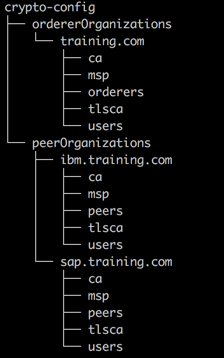
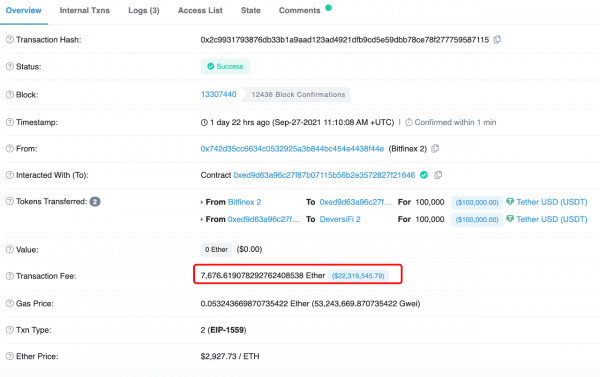
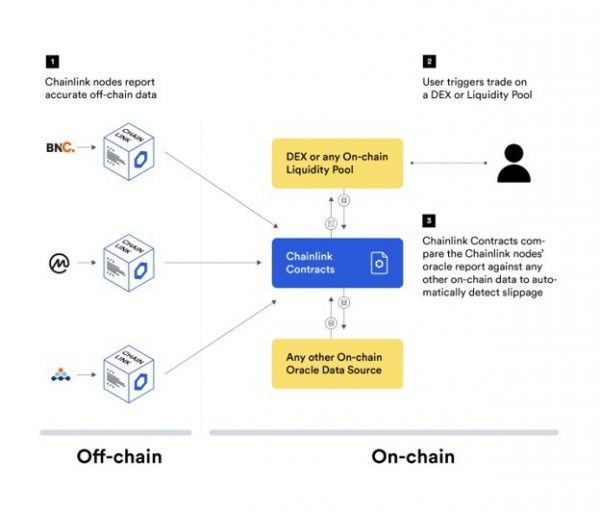

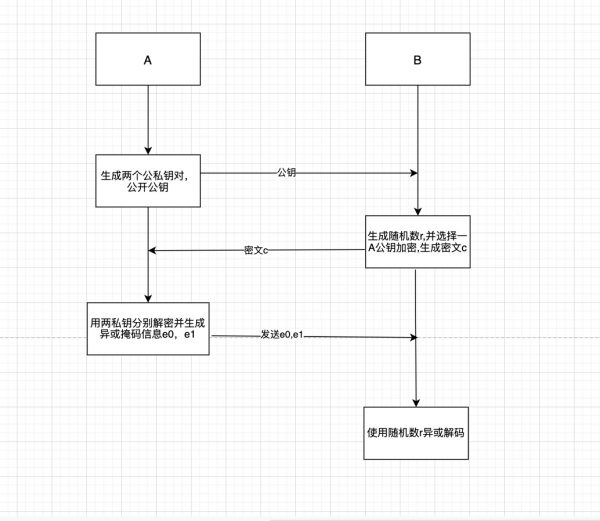
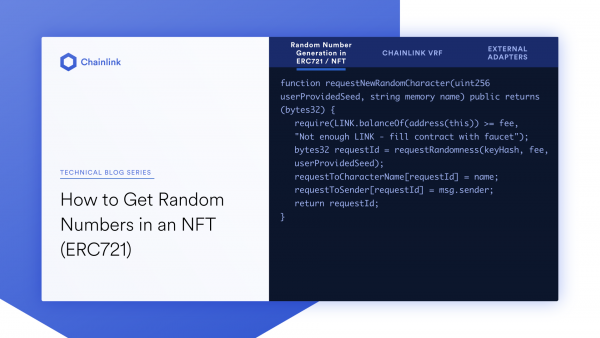


评论